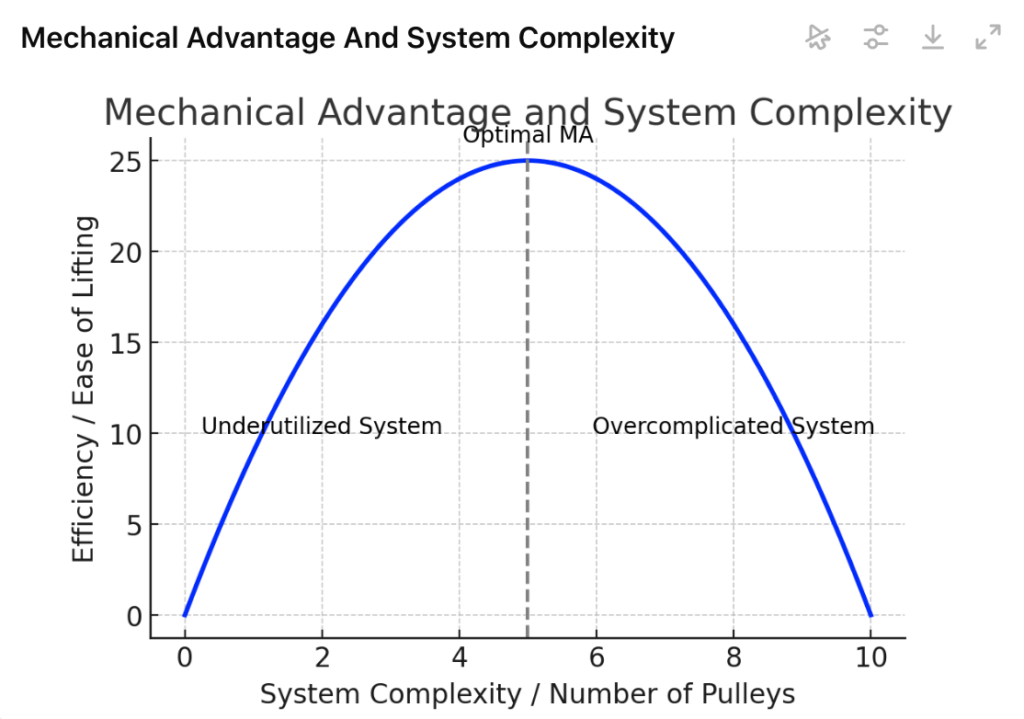Balancing Mechanical Advantage and Economic Efficiency
In economics, the Laffer Curve serves as a powerful visual model, illustrating the relationship between tax rates and tax revenue. It suggests that there’s an optimal point where tax rates maximize revenue, beyond which further increases actually reduce revenue by stifling economic activity. This principle of finding the perfect balance is not only relevant in economics but also in the world of technical rescue, particularly in rope rigging systems. Let’s explore how these seemingly unrelated fields share common ground in the pursuit of efficiency and effectiveness.
Understanding the Laffer Curve:
The Laffer Curve is a representation of the idea that lowering taxes from high levels can stimulate economic activity, which, in turn, increases overall tax revenue. The curve suggests there is a point where tax rates are optimized for the maximum economic benefit. Go beyond this point, and the economic activity decreases, reducing total revenue. Stay below it, and the government misses out on potential income.
The Mechanical Advantage System as an Economic Model:
In rope rescue, mechanical advantage systems are designed to multiply the input force applied to a load, making it easier to raise or lower that load. This system can be compared to the idea of supply-side economics, where the goal is to maximize economic output (or in this case, efficiency) with the least amount of input.
- Mechanical Advantage (MA): In a rescue scenario, a mechanical advantage system like a 3:1 setup means that for every unit of force you apply, three units of force are exerted on the load. This does not mean you can lift three times the weight but rather that you only need to apply one-third of the force required to lift the load directly. However, factors like friction in the system slightly reduce the actual mechanical advantage.
- Supply-Side Parallel: Just as reducing tax rates can potentially increase overall economic activity, increasing the mechanical advantage in a rigging system makes lifting a load more efficient. Both aim to achieve more (whether it’s generating more economic activity or lifting a heavy load) with fewer resources.
The Load as the Economic Output or Burden:
In economics, the “load” represents the economic output—goods, services, and overall productivity. In a rope rigging context, the load is the weight being lifted or lowered. Both require an optimal system to manage efficiently.
- Economic Output: In supply-side economics, the focus is on stimulating production and growth. A lower tax burden encourages businesses and individuals to produce more, increasing overall economic activity.
- Rescue Load: In rope rigging, the focus is on managing the load in the most efficient way possible, using the right combination of pulleys and rope configurations. The better the system, the easier it is to handle the load, just as the right tax policy makes it easier to grow an economy.
Pulley Systems as Economic Levers:
In economics, policymakers use tax rates and incentives as levers to influence economic activity. In rope rescue, pulleys act as the mechanical levers that distribute force and make managing the load more efficient.
- Optimal Configuration: In both cases, the key is finding the right setup. With pulleys, the goal is to configure the system so that it maximizes the mechanical advantage, thereby reducing the effort needed to lift the load. Similarly, in economics, the right balance of tax rates can maximize economic activity and revenue.
- Efficiency: The goal in both rope rigging and economic policy is to achieve the most efficient outcome. In rigging, this means lifting the load safely and effectively. In economics, it means encouraging maximum productivity and revenue without overburdening individuals or businesses.
Production as the Measure of Success:
Just as production is a key measure of economic success, the efficiency of a rigging system can be measured by how effectively it manages the load.
- Economic Production: In supply-side economics, the ultimate goal is to boost economic production, leading to growth and prosperity.
- Rescue Efficiency: In rope rescue, the production equivalent is the efficiency and safety with which a team can raise or lower a load. The right mechanical advantage system ensures that the job gets done with minimal effort and maximum safety.
Finding the Sweet Spot:
The most successful outcomes—whether in economics or rescue operations—come from finding the right balance. Just as the Laffer Curve suggests an optimal tax rate that maximizes revenue without dampening economic activity, a well-designed mechanical advantage system in rope rigging optimizes the balance between input force and load management.
- In Economics: Policymakers must navigate between taxing too much (which can stifle growth) and taxing too little (which can underfund necessary public services).
- In Rigging: Rescuers must find the right balance of mechanical advantage that allows them to lift a load safely without overcomplicating the system or making it inefficient.
Conclusion: The Art of Optimization
The worlds of supply-side economics and rope rescue rigging may seem unrelated, but they share a fundamental principle: optimization. Both disciplines seek to maximize outcomes—whether it’s economic growth or the efficient management of a load—by finding the perfect balance of forces at play. Understanding these principles can lead to greater success in both fields, demonstrating that the right balance is key to achieving optimal results, no matter the challenge.
Here are five blog posts from Rigging Lab Academy related to Mechanical Advantage:
- Technical Rope Rescue: Comprehensive Training for Teams – This post covers essential training techniques, including the use of mechanical advantage systems in rescue operations.
- Mainline Rescue and Rigging Systems – Explores the importance of mechanical advantage in mainline rescue scenarios, providing practical insights.
- Essential Elements of Rigging – A guide to critical rigging components, including mechanical advantage, for safe and efficient rescue operations.
- Mastering Anchors in Rope Rescue Operations – Discusses the role of anchors and mechanical advantage in building effective rescue systems.
- Highline Systems for Rope Rescue – Focuses on the use of mechanical advantage in highline systems for complex rope rescue scenarios.
These links provide detailed insights into how mechanical advantage systems are applied in rope rescue operations.
Peace on your Days
Lance










